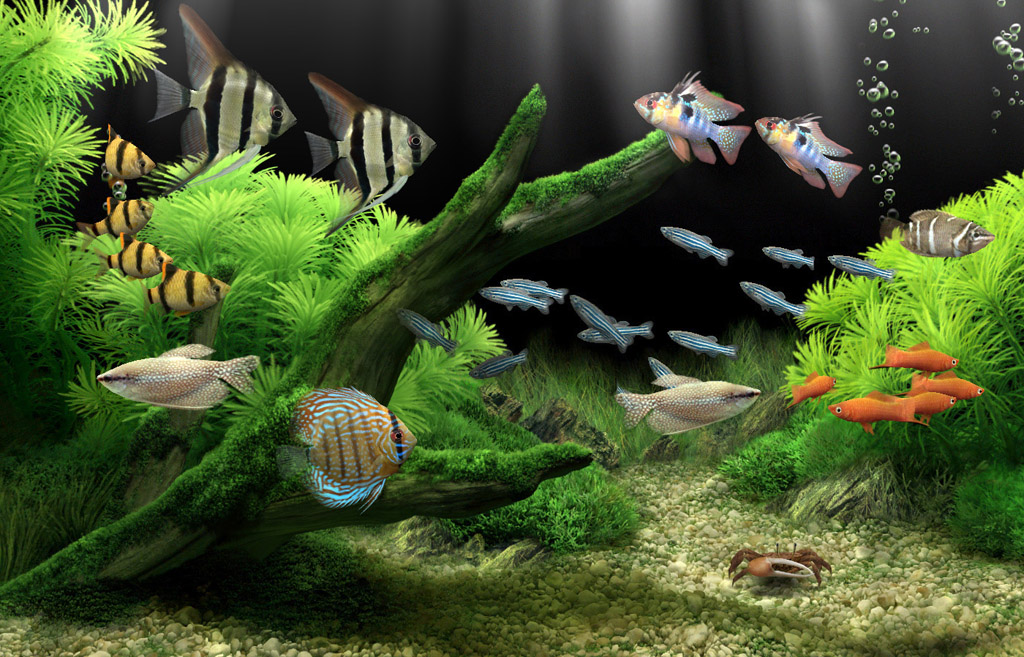

I also add Seachem's Stability to my is debated if it really helps with keeping a nice bacteria colony or not, but I've noticed less instances of bacteria die offs and bloom with it for new tanks. It stinks directly out of the bottle like sulphur, but its so diluted in the tank that this isn't an issue. I also use Prime for my tanks, its super economical as a little goes a long ways. A bigger tank will mean you can get more fish in there, which means aggressions are more spread out. Wow, great posts already! I agree that hiding spots are a great idea with cichlids, as they are territorial and the hiding spaces will be good for any that are getting picked on. Former petshop employee and private aquarium servicer. (Example: but these are MEAN fish just nice color) African Cichlids have colors just like marine fish.

You didn't have to go SW to get beautiful colors. ^Both fish can be fed a similar diet and get along. One male among your group of yellows would be stunning. Good in a (minimum) 3 foot tank but bigger is good. The Yellow Lab/Yellow Labido a great, relatively gently hardy fish. Here are some instructional videos to get you started!! Welcome to fishkeeping!!! ?concrete or wood floor if going over 70Gallons? ?Budget (TOTAL incl fish, food, everything) Before I advise you on fish and parts and such I'd like to ask: Bigger tank, bigger options, some nicer fish. This can be done in as little as 3 foot with nice looking fish. How much room do you have? Can you get your hands on a 6 foot tank? 5? 4? This makes a big difference in species choices. They like grey brown or black sand better. If you want white you can get white silica sand at pet stores but fish do not like it. If you want black sand that is available at petshops or via 3m (3M Color Quartz). BTW I DO recommend a thinner layer of sand to prevent gas pocket buildup. You've chosen an easy setup to maintain thumbs up. Please read about nitrification, the nitrogen cycle, and biological filter media.Įasily done. If you buy from a breeder, they will provide you said large piece. That way you don't need to worry about the cycling process. To start the tank out find a local aquarium club, get a large piece of cylced filter material, start with a small group of fish. You use a dechlorinator to make the water fish safe before adding. Maintenance of such an aquarium is stirring the sand to remove bubbles every few days, once a week you remove and replace 25-30 percent of the water, with new water of the same temperature. Get pool filter sand (nephelyne syenite looks most natural), rinse the heck out of it, add to tank, add rocks as you see visually desirable, done. Basically, my opinion of what you want to do to achieve this look is visit a pool store and a rock yard. Fishless CyclingĪBSOLUTELY check cichlid forum and stay there as the setup you are doing is in essence a cichlid tank. If you don't know what cycling is I highly recommend some reading as it's vital to keeping your fish healthy and happy. Gives a good section on cycling and setting up the aquarium as well as selected species from the lake. I'd also pick up the book Lake Tanganyikan Cichlids by Mark Phillip Smith. Personally I only like keeping fish from the same continent if not the same bodies of water together so I'd only ever combine them with Synodontis.ĪC Tropical Fish & Aquarium Is an excellent web site and I'd go there for more info in your search. I've also heard success with Rainbowfishes, as they like the high pH and get large enough/fast enough to avoid a lot of aggression. Most Plecostomas do well also, including Panaque nigrolineatus (Royal Plecos). Synodontis multipunctatus (Cuckoo catfish) is endemic to Tanganykia so it does especially well. These fish are descended from saltwater fish and need their pH to be at or around 8.0 and their hardness to be hard or very hard, 18-30 dGH.Īs far as tankmates, Synodontis do well with Africans. There are mixes specifically for Africans out there that work well.

Most people use Aragonite or crushed coral as a substrate, this raises the pH to the high levels Africans need. Personally I'd go with the 75, gives more room for fish and decor. If you want standard Malawi cichlids like yellow labs, you could do a 55-75gal. The sand is just shaped by hand I'm assuming, it's easy enough.

That type of set up is nice, personally I'd throw more hiding places in there. Shallow and long for shell dwellers, large and deep from Frontosas. Likewise, the way the tank looks reflects the fish you get. If you go with shell dwellers you'll only need a ten gallon, and if you want Frontosas you'd need at least an eighty gallon. The tank size totally depends on what type of Africans you want.


 0 kommentar(er)
0 kommentar(er)
